Bromeliad mix
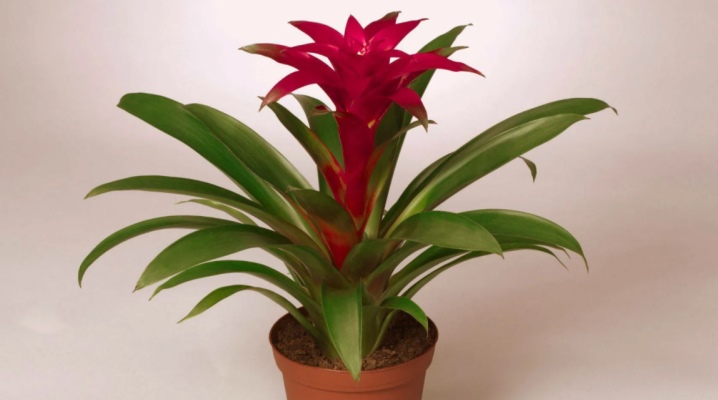
A special category of domestic plants is occupied by exotic representatives of the flora. But most of them require serious care, creating special conditions for comfortable and healthy growth. Since bromeliad is both exotic and non-capricious plant, it is very popular with flower growers. The spectacular appearance and ease of growing allow even novice greenhouse enthusiasts to breed bromeliads.
Description of the plant
In the register, the flower belongs to the bromeliad species, in which there are almost 3 thousand different representatives. As for the natural distribution, these are primarily tropical zones, subtropics. The plant comes from Latin America, where it is most widely represented today. In nature, bromeliad grows on boles and root branches of trees. Not all varieties are suitable for indoor cultivation, there are only a few options for this purpose.
-
"Penguin". A very common species with spectacular sharp foliage. The plant is native to the Mexican and Ecuadorian forests.
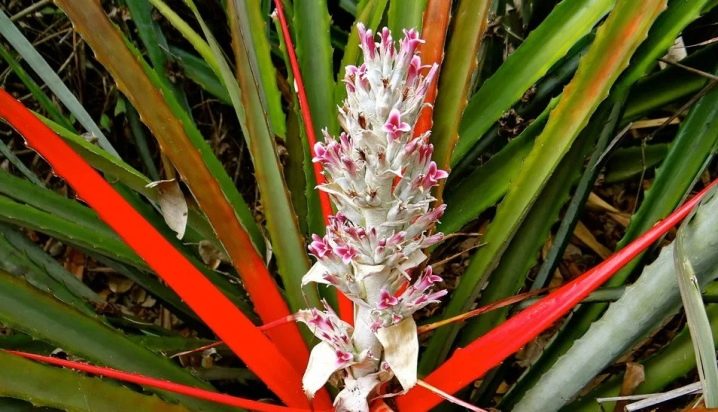
- "Guzmania". The flowering time is quite long - about 60 days. The foliage is formed by a dense rosette, the height of which varies from 25 to 45 cm.
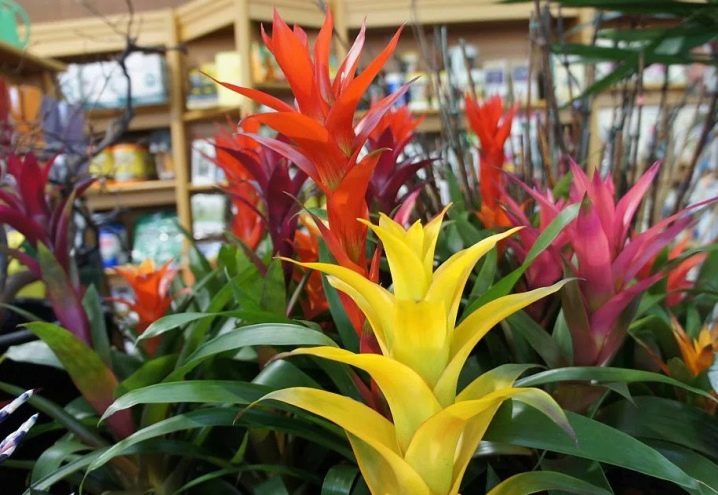
- "Vriezia". Within this variety, there are several hundred varieties, most of which are suitable for a home garden. They love warmth and may even require additional heating. The foliage creates a funnel-shaped shape, the plants are variegated or monochrome. Stretches up to 1 m.
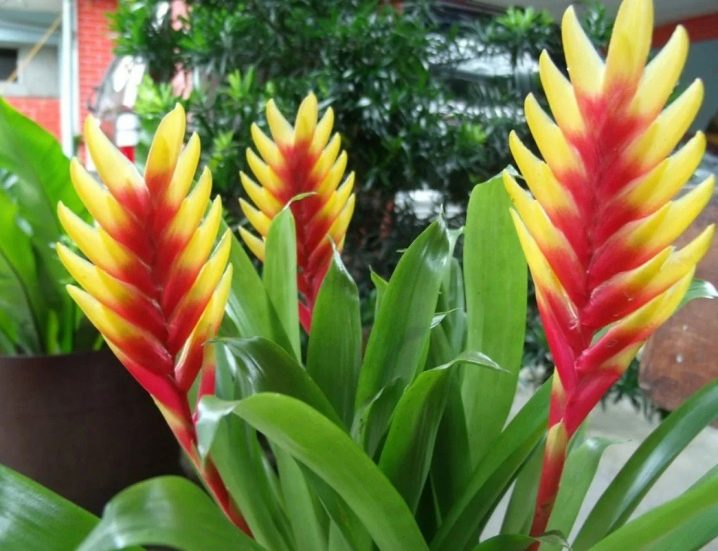
- Ehmeya. Differs in serrated foliage, funnel-type rosettes, inflorescences with a dense peduncle. The most popular is the matte red variety.
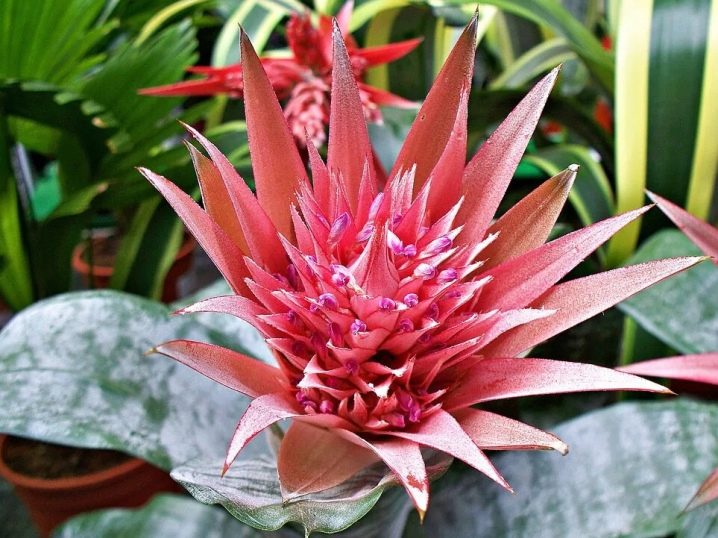
- Tillandsia. It belongs to the herbaceous species, among the indoor varieties "Medusa's Head" stands out. She has a non-trivial shape and an original color with a purple tint.
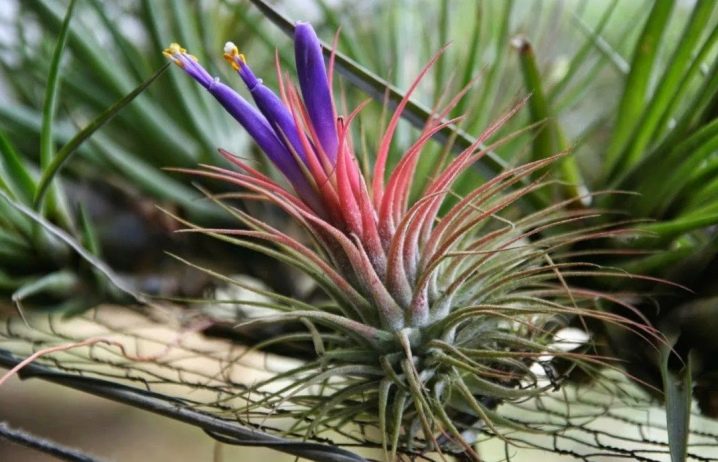
- "Neoregelia". The foliage of this species is spiky, with a glossy surface. The leaves form a rosette, in the middle of which they are cast white or purple.
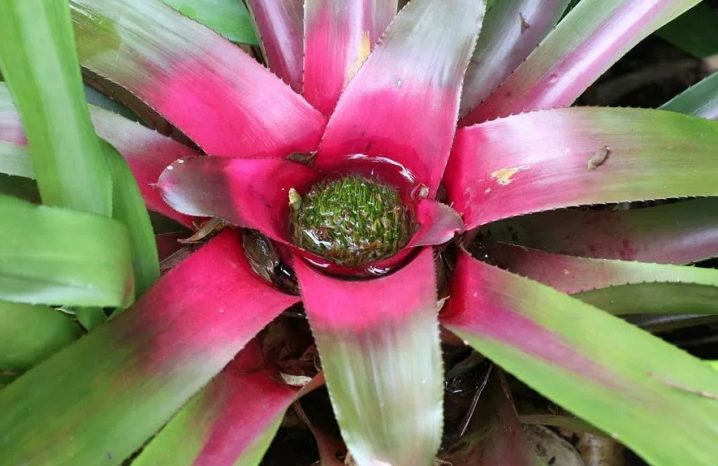
All these species retain similar characteristics, have similar growing conditions, so they can be found in florist shops under the name bromeliad mix.
The external characteristics are as follows:
-
flowers can have different tones - lemon yellow, purple, red, coral;
-
foliage can also differ in shade - in addition to the traditional green, there are purple, crimson tones;
-
height varies from 30 cm to 1 m;
-
has a pronounced smell similar to strawberries.
The flowering time depends on the variety and care measures - from 14 to 60 days. The flowering process consists in the fact that the foliage changes its color, but the inflorescences of the plant are inexpressive.
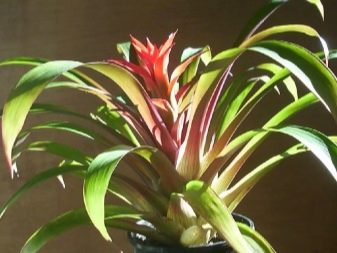
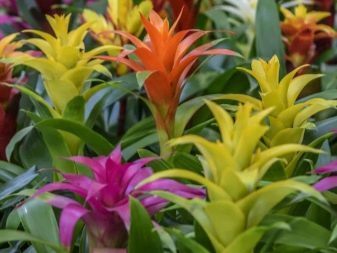
Growing
Bromeliad mix grows very well at home if properly cared for. There are a number of activities that need to be carried out in caring for the plant, and the conditions that must be provided.
-
Lighting level. A tropical mix requires quite a bit of light, but diffuse beams are preferred over direct beams. If this is not taken care of, the risk of burns increases. The best place for a plant pot is the east window. In winter, you need to take care of additional lighting devices, for example, phytolamps. The correct direction of the lamp is towards the ceiling.
-
Air temperature and humidity. The plant loves warmth, so it is important to take care of this condition. The minimum winter bar is +12 degrees, but it is better if it does not fall below +15.The ideal regime for this flower is + 23 ... 25 degrees. Bromeliad feels good at an air humidity of 70%, not lower. You can increase it with regular spraying, placing an aquarium, a humidifier, or a simple container of water placed nearby. Once a week, remember to wipe the foliage with a wet sponge.
-
Moisturizing. The plant loves water very much, but you cannot overdo it with watering, otherwise the root system will rot. Therefore, it is important to create good drainage. The mix is poured with settled water at a comfortable temperature, and the water is brought not into the soil, but into a deciduous outlet. In winter and autumn, the plant is watered less, in spring and summer - more actively.
-
Fertilizer. The plant is fed when the soil or foliage is moistened; for this, nutrient compositions are used. They are applied exclusively to wet soil. From the beginning of spring to the beginning of autumn, the plant is fertilized 2-4 times a month. In the rest of the period, the application interval is about one and a half to two months.
-
Transfer. This flower does not require replanting once a year, an exception is if the roots have completely filled the container. The transplant is carried out into light and loose soil with the addition of peat and sand.

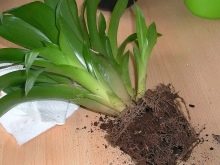
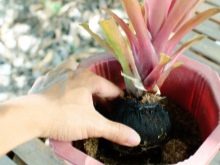
Reproduction
When the plant fades, young shoots form on the base. They are given time to mature and strengthen, and after 60-90 days they are carefully removed with a knife. Sections should be treated with charcoal and dried. The cut shoots are planted in the soil. The optimal time for the procedure is at the end of winter - mid-spring. Enough one and a half months on average for rooting to occur.
The main thing is to water the shoots on time, they will bloom in one and a half to two seasons.
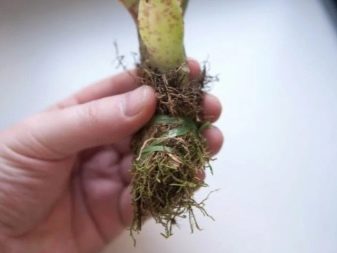
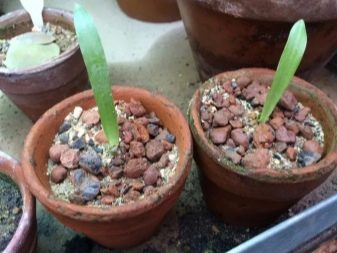
Diseases and pests
Most often, diseases and pests attack bromeliads when the modes of moisture, temperature, fertilization are violated. If you start treatment on time, you can cure the plant: fungicidal spraying will help from rust and powdery mildew. As preventive measures, it is necessary to ensure:
-
shading in the midday period;
-
avoidance of burns on foliage, stagnation of liquid, scarcity of moisture.
If the conditions for growing a flower are violated, it can be attacked by pests, for example, scale insects or scale insects. They are collected by hand, removed and the foliage is wiped with a soap solution using cotton wool. It is necessary to hold the solution on the foliage, then rinse them with water. Previously, the soil is covered with a film so that the solution does not get on it. If this method does not help, tobacco infusion or insecticidal formulations are used.
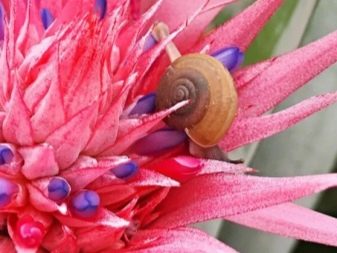
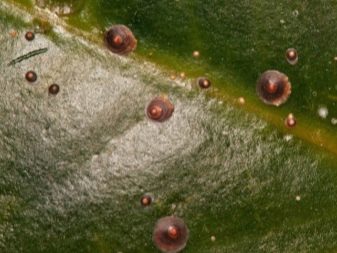































The comment was sent successfully.